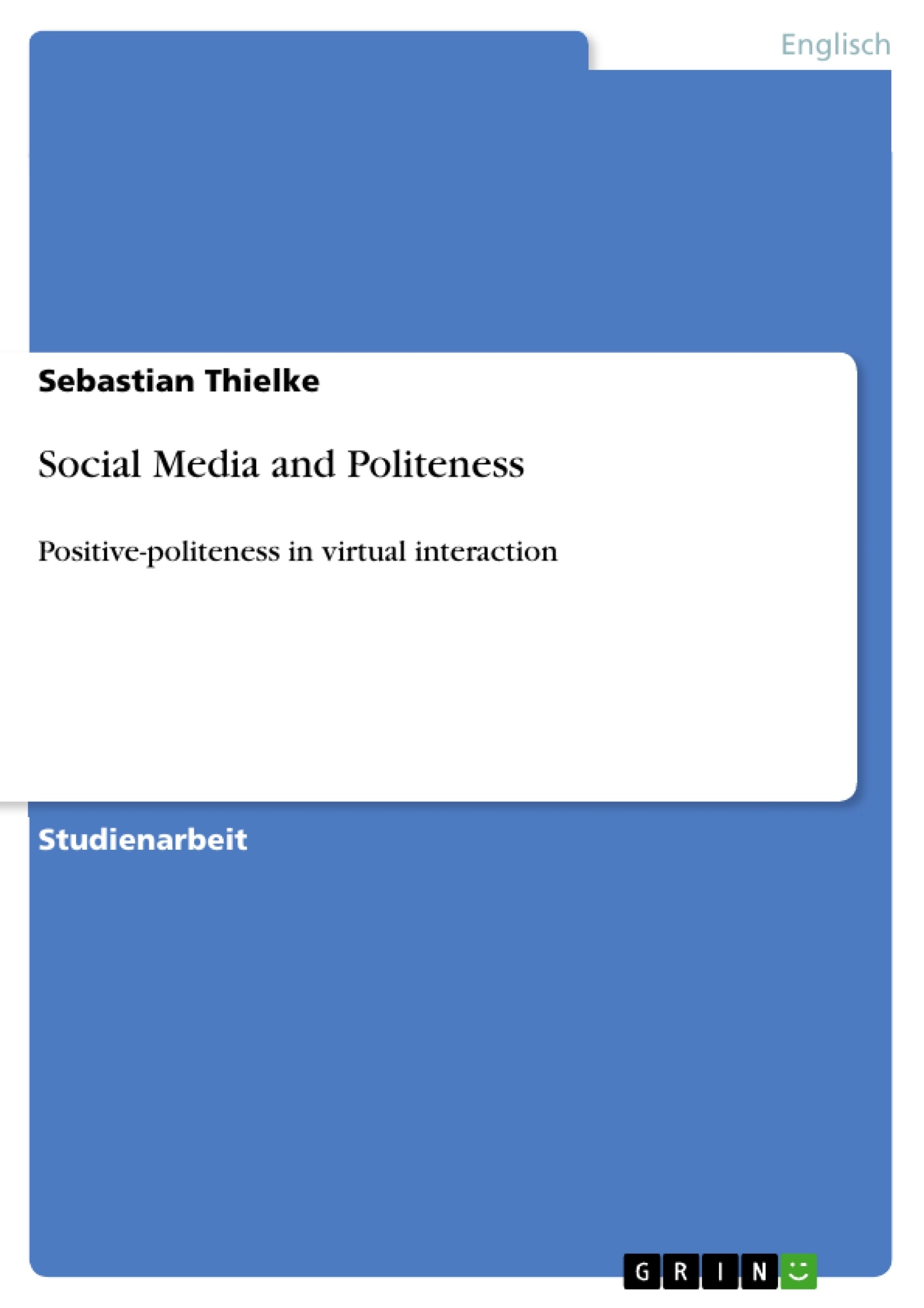“Never in the course of human events have we lived in a time where tools to communicate … have been handed to us in such volumes, and for free.” (Klososky dedication) By this Klososky made a statement about the current situation of our instruments of communication. But not only have the numbers of instruments impact on our communicative behavior. Also the style, the background and the way of use of such instruments changes and influences our communication. With the rise of the term Web 2.0 Tim O`Reilly and John Batelle coined the new way how the Internet is used and how it appears to its users. At the beginning the Internet was a collaborative tool for scientists to work together. It should be a simpler medium to exchange ideas and knowledge. So it appears to the broader audience as the so called Web 1.0. With this first step of the Internet humanity was confronted with such exciting new communication features as the e‐mail, the chat or even the forum. This new ways of communication breached borders. They were able to ignore time and location of the communicators and connect people of different cultures from different countries. It stimulated the matter of communication in a way humanity never had seen before. Communication was seen as borderless.
Inhaltsverzeichnis
- Preface
- Web 2.0, Social Media and Social Networks
- Web 2.0
- Social Media
- Blogs
- Microblogs
- Wikis
- Instant Messaging
- Google Plus
- Participants within the networks
- Purpose of conversations
- Classification of conversation according to Searls illocutionary speech acts
- Politeness
- Geoffrey Leech and politeness
- Goffman, Brown and Levinson and politeness
- Combination of the two approaches
- Politeness patterns within conversations in Social Media networks
- Type of conversation
- Positive Politeness pattern of conversation starter
- Positive politeness pattern of other participants
- Indicators of friendliness
- Indicators of approval
- Research work
- Text samples
- Frequency measurement
- Results of text sample examination
- Conclusion
- List of references
Zielsetzung und Themenschwerpunkte
Diese Arbeit untersucht die Verwendung von Höflichkeitsstrategien in Gesprächen innerhalb von Social-Media-Netzwerken. Der Fokus liegt dabei auf der positiven Höflichkeit, die sich sowohl auf das Politeness Principle von Leech als auch auf die Theorie des Gesichts von Brown, Levinson und Goffman bezieht. Ziel ist es, zu zeigen, dass Teilnehmer in Social-Media-Gesprächen hauptsächlich positive Höflichkeitsstrategien anwenden.
- Die Entwicklung und Definition von Web 2.0 und Social Media
- Die Rolle von Höflichkeit in der Kommunikation
- Die Verwendung von positiven Höflichkeitsstrategien in Social-Media-Gesprächen
- Die Analyse von Textbeispielen aus Google Plus
- Die statistische Auswertung der Ergebnisse
Zusammenfassung der Kapitel
Die Einleitung führt in das Thema der Arbeit ein und erläutert die Relevanz von Höflichkeit in der heutigen digitalen Kommunikation. Es werden die Begriffe Web 2.0, Social Media und Social Networks definiert und die verschiedenen Arten von Social Media, wie Blogs, Microblogs, Wikis und Instant Messaging, vorgestellt. Der Fokus liegt dabei auf Social Networks, insbesondere Facebook und Google Plus.
Kapitel 3 befasst sich mit der Theorie der Höflichkeit und stellt die beiden wichtigsten Ansätze vor: das Politeness Principle von Geoffrey Leech und die Theorie des Gesichts von Goffman, Brown und Levinson. Die Arbeit erläutert die verschiedenen Arten von Höflichkeit, insbesondere die positive Höflichkeit, die im Mittelpunkt dieser Arbeit steht.
Kapitel 4 entwickelt ein Muster für die Analyse von positiven Höflichkeitsstrategien in Social-Media-Gesprächen. Es wird eine bestimmte Art von Gespräch, die Vertreter, definiert und ein Muster für die Identifizierung von positiven Höflichkeitsstrategien erstellt. Dieses Muster basiert auf dem Politeness Principle von Leech und der Theorie des Gesichts. Es werden Indikatoren für Freundlichkeit und Zustimmung als Indikatoren für positive Höflichkeitsstrategien definiert.
Kapitel 5 beschreibt die Methode der Textbeispiele und die statistische Auswertung. Die Arbeit analysiert 30 Textbeispiele aus Google Plus und untersucht die Häufigkeit von positiven Höflichkeitsstrategien.
Kapitel 6 fasst die Ergebnisse zusammen und zieht eine Schlussfolgerung. Die Arbeit zeigt, dass Teilnehmer in Social-Media-Gesprächen mit einer Wahrscheinlichkeit von 44 Prozent positive Höflichkeitsstrategien verwenden. Dies unterstützt die Hypothese der Arbeit, dass positive Höflichkeitsstrategien in Social-Media-Gesprächen eine wichtige Rolle spielen.
Schlüsselwörter
Die Schlüsselwörter und Schwerpunktthemen des Textes umfassen Web 2.0, Social Media, Social Networks, Höflichkeit, Politeness Principle, positive Höflichkeit, Face, Google Plus, Textbeispiele, statistische Analyse. Die Arbeit analysiert die Verwendung von positiven Höflichkeitsstrategien in Social-Media-Gesprächen und zeigt, dass Teilnehmer in diesen Gesprächen hauptsächlich positive Höflichkeitsstrategien anwenden. Der Fokus liegt dabei auf der Analyse von Textbeispielen aus Google Plus.
- Quote paper
- Sebastian Thielke (Author), 2011, Social Media and Politeness, Munich, GRIN Verlag, https://www.grin.com/document/178048



